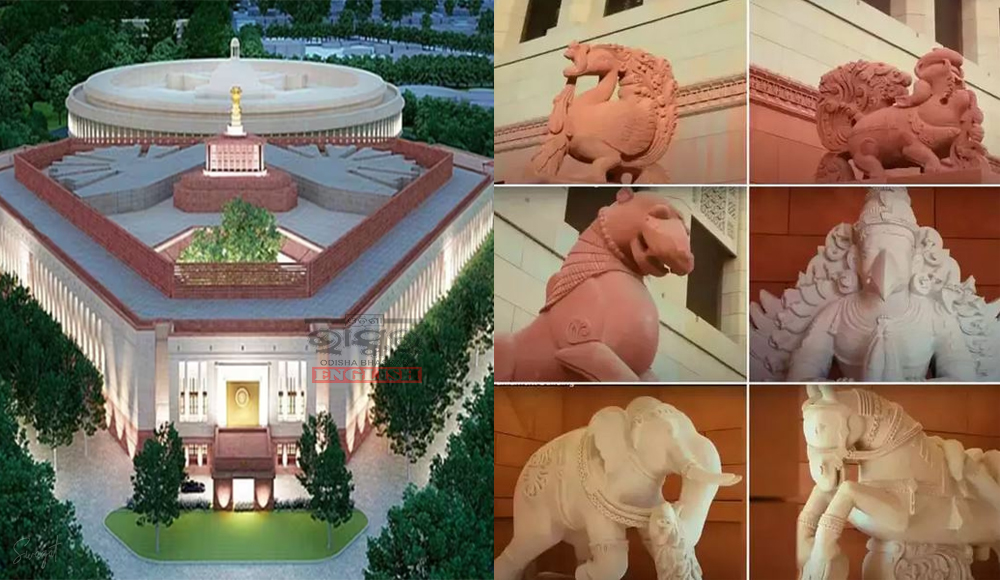New Delhi: The new Parliament building, set to host its first sessions tomorrow, features six gates, each named after creatures, both real and mythological, symbolizing various aspects of India’s representation of its 1.4 billion citizens.
1. Gaja Dwar – This gate, situated on the north side, derives its name from the elephant. Elephants are known to represent intellect, memory, wealth, and wisdom. The north direction, as per Vaastu Shastra, is associated with Mercury, a source of intellect. Elephant motifs, in line with Vaastu Shastra principles, are believed to bring prosperity and happiness.
2. Ashwa Dwar – Named after the horse, this gate symbolizes power, strength, and courage, qualities highly valued in governance.
3. Garuda Dwar – Positioned as the eastern entrance, Garuda Dwar takes its name from Garuda, the king of birds and the mount of Lord Vishnu. Garuda’s association with Lord Vishnu, the preserver in the Hindu trinity, makes it a symbol of power and duty (dharma), as reflected in the insignia of various countries.
4. Makara Dwar – Named after the legendary sea creature known for its combination of different animals, Makara sculptures adorn Hindu and Buddhist monuments across South and Southeast Asia. Symbolizing India’s unity in diversity, these sculptures also serve as protectors. The Makara Dwar faces the entrance to the old Parliament building.
5. Shardula Dwar – The fifth gate derives its name from the mythological creature Shardula, possessing the body of a lion and the head of a horse, elephant, or parrot. It symbolizes the power vested in the people of the nation.
6. Hamsa Dwar – The final gate, Hamsa Dwar, is named after the swan, the mount of Saraswati, the Hindu goddess of knowledge. Hamsa’s flight symbolizes moksha, signifying the liberation of the soul from the cycle of birth and death. The Hamsa sculpture on Parliament’s gate embodies self-realization and wisdom.
These gates not only add architectural significance to the new Parliament building but also carry deep symbolic meaning, representing the diverse facets of India’s democracy and heritage.




Comments are closed.